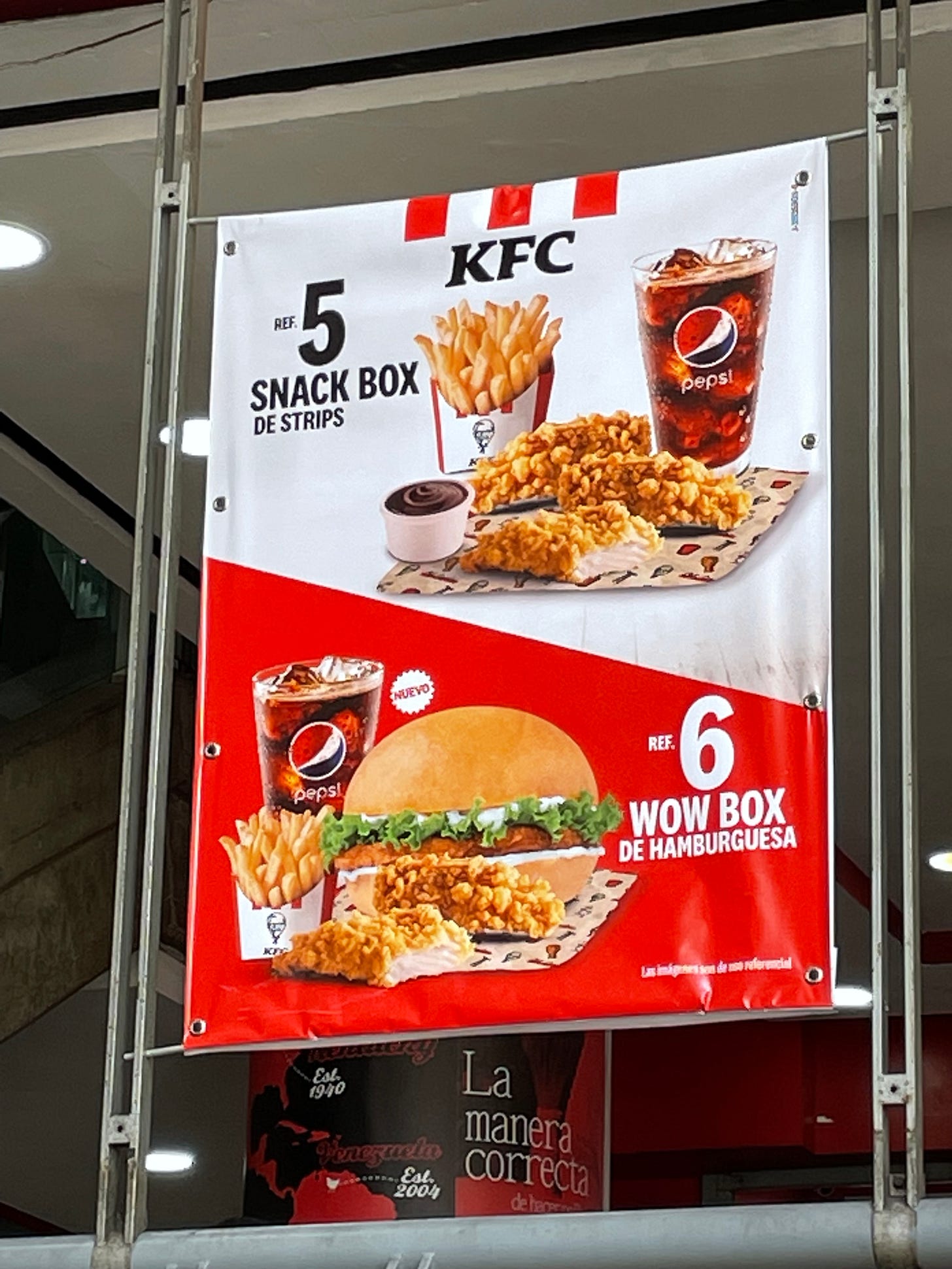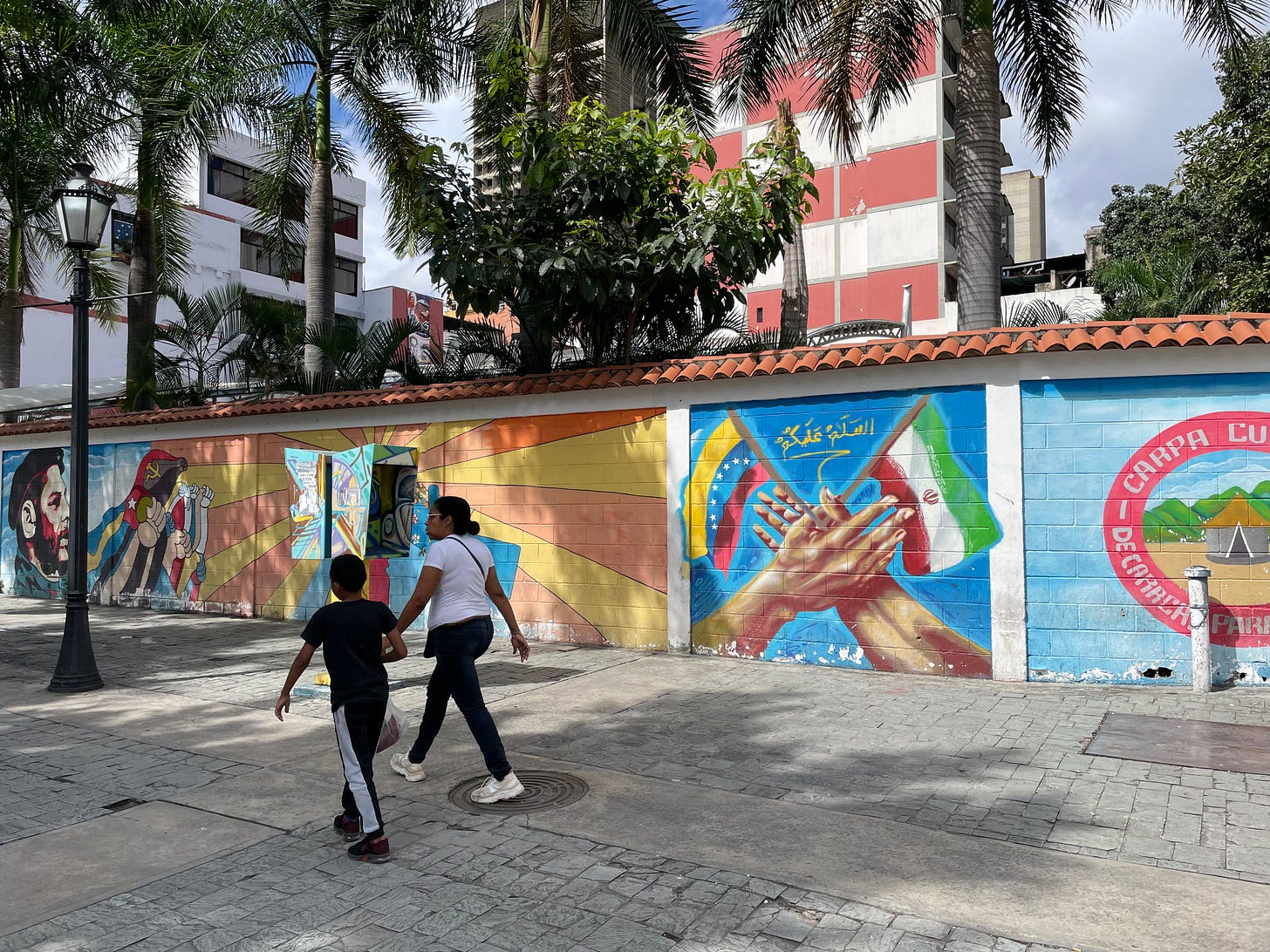New Venezuelan economy out of the crisis
Report on Venezuela's changing economics as the country seems to be showing signs of recovery.
Caracas, 22 March 2023.
This February, Venezuela hosted the 2023 Caribbean Series, a much-awaited baseball competition. Outside of the US, baseball is most popular in this region. Teams from across the region played off at brand new stadiums. On a match, as President Nicolás Maduro came out on the stand, he was cheered by fans. Soon after, during the Carnival holidays, fleets of yachts swarmed the beaches of Morrocoy and Lechería. International tourists are neglibible; the owners are mostly residents of Caracas, the capital.
As last year ended, Maduro’s main rival was swept under the carpet by his own backers. Juan Guaidó, who in 2019 was recognised as interim president by 50 countries including the US and the EU, was deposed in a zoom meeting by opposition representatives. This episode makes one think Venezuela has changed; it does not resemble the country that saw its economy collapse and mass protests breaking out daily. Nonetheless, poverty and economic performance are still much worse than a decade ago. Signs of recovery and new wealth are nonetheless irrefutable. But where is it coming from?
Who are Venezuela’s wealthy?
The largest fortunes in Venezuela mostly left the country. If not physically, they expanded or relocated their operations and assets abroad. Atop a net worth of $3.5 billion, Juan Carlos Escotet tops the list with his Grupon Banesco, a banking conglomerate. He now lives in Spain, where he has become the fifth richest individual there. Unlike Escotet, who built his empire from the bottom, the next two were fortunate heirs: Gustavo Cisneros, at the head of a media empire; and Lorenzo Mendoza leading Grupo Polar. The latter produces the main brands for the staple corn flour, beer, and soft drinks. Building a corn flour factory in Texas, Mendoza has found a good clientele among Venezuela’s international diaspora. Who are, then, the wealthy that still roam Caracas?
Understanding the key dynamics of Venezuela’s economy is essential. The image of Venezuela as a prosperous country until the arrival of Chávez and Maduro is misleading. The country was already immersed in a period of economic decline since the 1970s, after it had become the richest in Latin America – and fell to become the 6th by the time Chávez was elected. This is explained very well by professors Ricardo Hausmann and Francisco Rodríguez, two Venezuelan economists who have advised opposition leaders such as Juan Guaidó and Henri Falcón. Furthermore, it was and remains a highly unequal country: back in 1998 the poverty rate was at 50%, similar to what it is today in the current economic crisis.
The business model that thrived was already based on reaching for the state’s petrodollars for contracts and imports. This was the case even as reforms made the economy more market oriented than Uruguay or Mexico, who overtook Venezuela in economic growth. Then, under the presidency of Hugo Chávez, the country benefited from a global commodity boom and state revenues skyrocketed. For the country’s business leaders, this meant overpriced contracts and more imports.
Graph: An economy closely linked to oil
Taking over from, Chávez, Nicolás Maduro endured the opposite luck. With oil prices down and sanctions hitting hard, state coffers dried up. Without the state injecting dollars into the local market, private firms sold less for more. The state tried printing bolivars to pay the bills, but this only sunk the exchange rate deeper. Many fortunes and aspirations vanished. A focus of anti-government discontent was East Caracas, home to the upper class. The epicentre of 2017’s mass protests was Altamira, one of the wealthiest areas. Today, however, East Caracas is quiet during the day and vibrant after sunset. This area is at the centre of the recovery, with new luxury buildings and shops opening up, as a BBC World report showed early this year.
Despite accusations that the new rich are purely cronies, East Caracas is still an important hub for the aversion to Maduro. The upper-class boroughs, Chacao, Baruta and El Hatillo, are ruled by opposition mayors. In the populous, working-class districts of Libertador and Sucre, on the other hand, support for the president is visibly strong; the mayors are of his PSUV party. I spoke with Dailys Hernández, a medical student from Petare, the largest barrio – in the Sucre district. She complained of the “fanaticism” that Maduro enjoys from its residents, despite the hardships they have endured.
Remittances and import shops
According to Professor Hausmann, the upturn of economic activity is limited to East Caracas and to those with foreign incomes. With the prolonged crisis, many have found ways to source money from abroad, in lieu of the state’s missing petrodollars. The millions of émigrés have sent unprecedented sums in remittances. For 2022, this inflow is estimated to have reached $4.2 billion. Some also have investments abroad or work remote jobs, making comparatively high incomes opposed to the mass of society. Locals can also use US and European debit cards from their relatives abroad. Professor Francisco Sanabria and brokerage house executive Eleazar Jiménez explain that remittances changed a key factor in the national economy. Dollars used to be accessible only to the wealthiest in society, but now they are available to the general population.
For the most part, entrepreneurs have not challenged the dynamic of dependency. Maduro eventually removed import tariffs on food and loosened controls on the dollar. This was a welcome measure by many Venezuelans, at the time when shelves were empty. As a result, many shops, known as bodegones flourished selling imported goods. Supermarket chains also resurfaced.
The new bourgeoning shops have two key characteristics. First, that prices are set in dollars. Consumers can pay in bolivars, but on the day’s rate – which is often announced on the counter. That way, sellers are hedged from any weakness shown by the bolivar. Secondly, products are often not marketed to be sold in Venezuela; they are the exact items that could be found in a supermarket shelf in the US or Western Europe. This is the result of conventional import routes being disrupted through sanctions, while being facilitated by the removal of food tariffs. In 2013, the last year where there is complete data, 23% of goods came from the US; 10% from Brazil and 5% from Colombia. In 2019, Venezuela had no official, direct transport connection with any of the three countries. Only now its neighbours are reopening borders.

Many of these products are sold at prices too high not just for Venezuelans, but for countries like Spain, according to Professor Hausmann. Indeed, they are often bought in the US and Europe itself through unconventional routes, and sellers add a markup for the transport and profit. It is no question that this sector has done well; however, the more interesting question is who can afford such prices?
Rebirth of finance
Alongside the bodegones, Eleazar Jiménez tells me how the finance sector has reactivated. The government has allowed for hard currency bank deposits and, more broadly, for a de facto dollarisation of everyday operations. While settlement of trades is done in bolivars, values are indexed on the dollar rate, protecting investments. Thanks to this provision, Venezuela’s main equity index grew in 2022, outperforming most in the Americas. Last year, state firms also issued fresh minority shares into the stock market, in a sign of confidence and optimism. Even many foreign investors are still holding their positions, hoping for a rebound.
“Fixed income has also presented a profitable avenue” Jiménez explains. “Whereas bonds issued by the state have been defaulted for years, debt in the private sector is offering good returns to national investors. This profitability is ensured by the indexation with inflation and currency devaluation. Trusts and savings banks are key investors in fixed income, as they must seek low-risk assets by law.” From his view, the best-faring sectors in capital markets are finance, manufacturing, and agriculture.
Oil and Mining under the radar
Oil production has also picked up, and benefitted from high prices after Russia’s invasion of Ukraine. The Biden administration has prompted negotiations with Maduro, by allowing Chevron to renew its operations. The first shipments of Venezuelan oil have arrived in US terminals this year. Simultaneously, the state has promoted other sectors, especially another extractive industry: mining.
Oil remains the largest export, even though it saw an abysmal fall in revenues. According to WTO data in 2016, at almost $26bn, fuel-related products accounted for 96% of export income. By 2021, at just $2.5bn, this sector was down at 69% of total exports. A large factor in this trend has been the explicit ban on Venezuelan oil. Both the state and private businesses have had to look for alternative exports. Manufacturing, mining and agriculture have seen a meaningful recovery, even as the national economy lingers at 68% below what it was a decade ago, as per IMF figures.

Mining is of special interest because it is shrouded by mystery. On one hand, state-led activities are intended to go under the radar of sanctions, and so exports are hard to track. On the other, illegal mining is also widespread across much of the Amazon rainforest, across national borders. Therefore, it is hard to know with precision the full extent of this sector. In some cases, the best information available is from satellite pictures of areas undergoing deforestation and first-hand accounts from affected areas.
Even the state-run oil industry is using many strategies to keep its exports secretive. William Castillo, at the head of the government’s Anti-Blockade Department, argues that discreetness has been a crucial part of the recovery. The Financial Times has made investigations into Russia’s shadow fleet of tankers, which are employing tactics used by Venezuela and Iran. Ships switch off radars to hide their location, and even transfer their contents at sea. As a result, it is impossible to access hard data on how much Venezuela is making in exports, and who are the main beneficiaries.
As conditions stabilise, we might be able to see the full picture of the Venezuelan economy today. Corruption is still deep-seated in across the country’s institutions, and this will be a powerful obstacle. According to William Castillo, there are 60 executives of the state oil firm that have been charged and imprisoned on corruption charges. It also remains to be seen how long this relative bonanza will last. If the culture of dependency persists, this upturn is bound to be short-lived.






